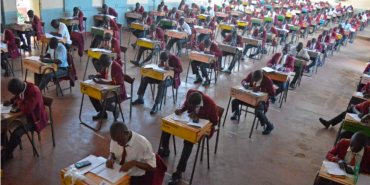Ruto's Rocky Road to Raila's Strongholds

President William Ruto took a risk by offering cabinet positions to the opposition, but he had limited options due to persistent demands from young protesters.
By extending cabinet positions to opposition figures, most notably the veteran politician and former Prime Minister Raila Odinga, Ruto aims to quell the unrest that has been simmering among the youth. This strategic move reflects the mounting pressures on Ruto's presidency and could potentially secure votes in Raila's traditional strongholds of Nyanza, Western, and Coast provinces. However, it also risks alienating the influential Mt Kenya bloc, which played a crucial role in Ruto's 2022 electoral victory. The stakes in this political manoeuvring are exceptionally high. Ruto's administration is keenly aware of the historical precedent set by cross-party collaboration, a strategy that proved successful for the late President Mwai Kibaki in his rise to power in 2002.
As Ruto engages with Odinga, there is a cautious sense of optimism about the potential for a favourable outcome. Nevertheless, the risk of losing support in Mt Kenya, a region that commands over 3.5 million votes, remains a significant concern. Ruto finds himself in a precarious position, attempting to balance conflicting loyalties. The Mount Kenya region, long considered a crucial foundation for successful presidential campaigns, has shown signs of shifting allegiances. Recent endorsements for Interior Cabinet Secretary Kithure Kindiki by lawmakers from this area indicate growing discontent that Ruto must address urgently.
Adding to the complexity is the increasing popularity of Deputy President Rigathi Gachagua, which further complicates Ruto's political calculations as he attempts to nurture ties with Raila while maintaining the support of the Mt Kenya bloc. Recent diplomatic efforts in Nyanza and Western regions have yielded positive results for Ruto, generating goodwill among Raila's supporters. This has been bolstered by Ruto's approval of Raila's bid for the African Union Commission chairmanship. Ruto's allocation of state resources to support Raila's ambitions signifies a strategic alliance, albeit one fraught with uncertainties.
Speculation abounds regarding potential vice-presidential candidates for the 2027 elections should Ruto decide to pivot away from Gachagua, with names such as Prime Cabinet Secretary Musalia Mudavadi and Homa Bay Governor Gladys Wanga being mentioned. In addition to these high-level political manoeuvres, Ruto has been fostering partnerships with lawmakers from the Orange Democratic Movement (ODM). Recent informal meetings with ODM leaders demonstrate his efforts to bridge divides and cultivate cross-party collaboration. Ruto plans to continue this outreach with engagements involving Nairobi lawmakers in the coming week. However, Ruto's rapprochement with Raila has not been without its critics.
Raila has publicly denied any formal agreement with Ruto, inadvertently emboldening some opposition figures to challenge the President's influence. Younger politicians like Embakasi East MP Babu Owino, viewed as potential successors to Raila, have vocally opposed Ruto's overtures, asserting that any cordial reception does not equate to political support. As tensions mount, many observers remain sceptical about the effectiveness of Ruto's initiatives in Raila's strongholds. Historian Timothy Onduru has characterized the opposition's resistance as a "storm in a teacup," suggesting that Raila's influence in his bases remains strong.
Onduru cautions that Ruto could find himself in a compromised position should his diplomatic efforts fail. The potential resurgence of Raila's political ambitions, particularly if he does not secure the AUC leadership, could significantly raise the stakes, setting the stage for an intense political contest as the 2027 elections approach.














Add new comment